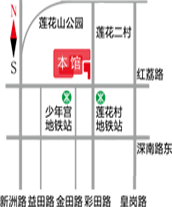
- Overseas Journey - A Special Exhibition of Chinese Painters' Foreign Sketching in the 1950s and 1970s
-

Click to view Exhibition period: September 26th to October 31st, 2010
Exhibition location: Central Hall, Halls A and B on the 1st floor of Guanshan Yue Art Museum
Organizer: Guanshan Yue Art Museum
Co organizers: China National Art Museum, Nanjing Museum, Lingnan School of Painting Memorial Museum, Lai Shaoqi Art Museum, Yaming Art Museum, Li Keran Foundation, etc
The "Overseas Journey - Overseas Sketching Exhibition of Chinese Painters in the 1950s and 1970s" is hosted by the Guanshan Yue Art Museum in Shenzhen, and co organized by multiple units such as the China National Art Museum, Nanjing Museum, Lingnan School of Painting Memorial Museum, Lai Shaoqi Art Museum, Yaming Art Museum, and Li Keran Foundation. A total of more than 110 works of famous 20th century artists, including Fu Baoshi, Li Keran, Zhao Wangyun, Li Xiongcai, Guan Shanyue, Lai Shaoqi, Zhang Ding, Liu Mengtian, Shi Lu, Yaming, are exhibited. This activity aims to summarize and showcase the academic nature of Chinese artists' foreign sketches from the 1950s to 1970s in the mid to late 20th century, in order to attract further attention and research from the academic community on the phenomenon of art history in this specific period.
This exhibition is hosted by the Guan Shan Yue Art Museum, and our museum separately displays 40 European sketching works from the early days of Guan Shan Yue's founding in exhibition halls A and B on the first floor. The vast majority of them are the first time they have been publicly released. Comprehensively showcase the sketching works of Guan Shi during the early 1950s in European countries such as Poland, France, and Switzerland. Along with the diplomatic needs of the newly established New China, a series of cultural exchanges were carried out, allowing painters to venture overseas again, appreciate the exotic customs, and express their writing skills. In August 1956, Guan Shanyue and Liu Mengtian went to Poland to sketch and completed more than 60 sketches, including "The Port of Gettani" and "Katzmish". They also held a viewing exhibition at the Chinese Embassy in Poland. Between 1958 and 59, Guan Shanyue was appointed by the Chinese government to host the "Exhibition of Chinese Painting for the Past Century" in countries such as France, the Netherlands, Belgium, and Switzerland in Europe. During his travels to Europe, his sketches vividly portrayed the customs and traditions of a specific historical period in a foreign land, both in terms of characters and scenery. It is worth noting that in a large number of European landscape sketches, Guan's intentional or unintentional breakthroughs in the original expression techniques can be seen, which may reveal his thinking and practice on how to use the language of Chinese painting to express foreign landscapes, as well as the conflicts and integration caused by the brush and ink language of Chinese landscape painting when facing foreign landscapes.
The central hall and C hall on the first floor showcase representative foreign sketching works of famous painters. We chose Fu Baoshi for this exhibition, mainly showcasing his Eastern European sketching works. Using pure Chinese painting forms to depict Western scenery, Fu Baoshi is undoubtedly a pioneer. From June to August 1957, in just three months, he traveled across Europe and Asia on a sketching journey. In the tiring journey, he incorporated exotic charm into his own artistic conception and created fifty masterpieces. This batch of Eastern European sketching works by Fu Baoshi can be seen as a transformation of Chinese painting from tradition to modernity after the founding of the People's Republic of China. At the same time, it is also an important exploration by Mr. Fu Baoshi from emphasizing "commonality" to emphasizing "individuality", from emphasizing "tradition centered" to emphasizing "feeling centered", and from emphasizing "closure and inheritance" to emphasizing "openness and innovation". It also proves that Fu Baoshi closely followed the trend of this era, raised the banner of "pen and ink should follow the times" and "thinking has changed, pen and ink cannot remain unchanged", and created such a batch of works that express the characteristics of the times.
And Li Keran's nine sketching works during his 1957 visit to Germany also highlighted the highlights of this exhibition. During his youth, Mr. Li Keran aspired to revolutionize Chinese painting. In 1954, he took a decisive step by transforming the traditional Chinese landscape painting of "learning from nature and learning from the source of the mind" into a landscape painting and creation oriented towards nature. Over the course of ten years, he traveled across the country, completing hundreds of ink and wash landscape paintings and creating a new era. In 1957, his life painting works during his visit to Germany were a masterpiece of his vigorous years, and can be regarded as the focus of Li Keran's artistic innovation activities. This batch of foreign ink painting works showcased Li Keran's strong tendency towards mystical aesthetics in his temperament, and his fascination with the towering, profound, warm, and bright and hazy objects, which was similar to religious emotions. This temperament was revealed, which happened to witness Li Keran's life painting philosophy and practice, as well as the core of his Chinese painting art system: "Valuable courage, important soul", "Inheriting for the motherland's rivers and mountains", "Not competing with cameras". The motto other sayings indicate the lofty aesthetic ideals of a generation of landscape masters.
At the same time, foreign sketching works by other famous painters such as Zhao Wangyun, Li Xiongcai, Zhang Ding, Liu Mengtian, Shi Lu, Yaming, etc. will also appear in this exhibition, forming an undeniable phenomenon in the history of new Chinese art.
Since modern times, with the changes in the worldview of the Chinese people and the allowance of objective transportation conditions, it has become possible for some artists to travel abroad and engage in on-site sketching. Especially in the early days of the founding of the People's Republic of China, under the special historical background of the Cold War pattern formed by the two major camps led by the United States and the Soviet Union, Guan Shanyue and his contemporary painters Fu Baoshi, Li Keran, Zhao Wangyun, Li Xiongcai, Lai Shaoqi, Zhang Ding, Liu Mengtian, Shi Lu, Yaming, etc., who were specially assigned by the government to visit foreign countries, have had a special opportunity to produce a batch of painting works of special significance. We will cooperate with major art museums and related collection institutions throughout the country through borrowing exhibitions. Strive to present the special phenomenon of art history in New China through the exhibition of original works.
Since modern times, with the changes in the worldview of the Chinese people and the allowance of objective transportation conditions, it has become possible for some artists to travel abroad and engage in on-site sketching. Especially in the early days of the founding of the People's Republic of China, under the special historical background of the Cold War pattern formed by the two major camps led by the United States and the Soviet Union, Guan Shanyue and his contemporary painters Fu Baoshi, Li Keran, Zhao Wangyun, Li Xiongcai, Lai Shaoqi, Zhang Ding, Liu Mengtian, Shi Lu, Yaming, etc., who were specially assigned by the government to visit foreign countries, have had a special opportunity to produce a batch of painting works of special significance. We will cooperate with major art museums and related collection institutions throughout the country through borrowing exhibitions. Strive to present the special phenomenon of art history in New China through the exhibition of original works.
In addition, we will also present relevant literature and historical materials from different periods, supplemented by chronologies, maps, etc., in the hope of providing a relatively complete visual material for audiences and scholars who are concerned about the fate of 20th century painting art, as well as a historical cultural space. We believe that exploring the most dynamic and special phenomenon in the history of Chinese art in Shenzhen, a city of reform and opening up, is mutually beneficial. Organizing this event well is undoubtedly a gift to celebrate the 30th anniversary of Shenzhen's founding.
-
2010-09-18



